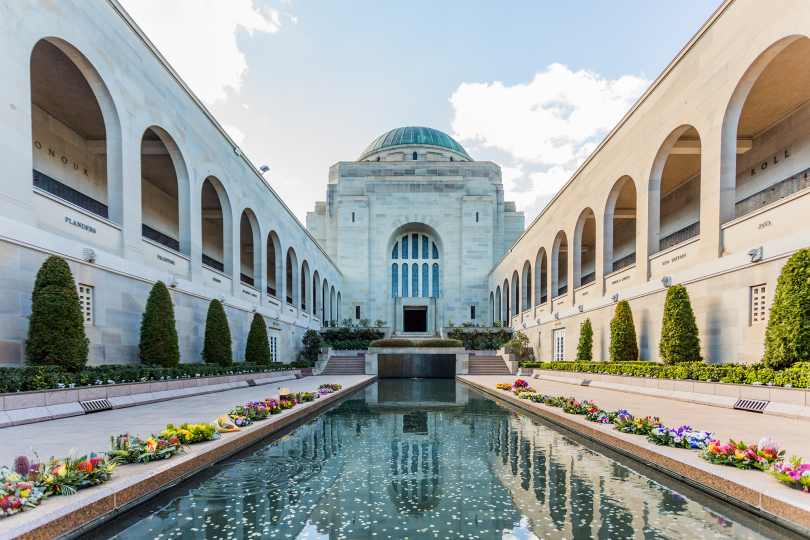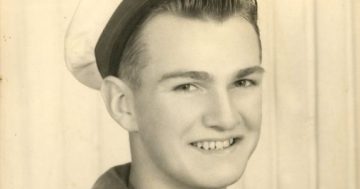
Canberra activist Dr Sue Wareham says the AWM’s expansion consultation was cursory. Photo: File.
Matthew Anderson, who has just been appointed to succeed Dr Brendan Nelson as director of the Australian War Memorial, will inherit what many would regard as a poisoned chalice, with the highly contentious $500 million redevelopment of the Memorial likely to begin this year.
Regardless of his enthusiasm for the project, which is almost certainly strong, one of Anderson’s challenges will be in continuing the AWM’s myth that “the overwhelming majority of Australians” share that enthusiasm.
Public comment thus far has indicated the opposite, and the Memorial’s recent series of ‘community consultations’ is unlikely to help dispel that conclusion.
‘Have Your Say’ sessions were conducted by the Memorial around the country, from 2 to 12 December. Details were released just days before the process started.
For publicity, the Memorial relied significantly on the chosen venues, the majority of which were RSLs or other service clubs; predictably, it did not reach organisations of a different perspective, some of whom were known to the AWM. Some attendees were confused as to whether they needed an Eventbrite ticket to get in, or whether some sessions were open only to veterans.
None of the sessions were held out of business hours when most people are available, with the exception of some early evening ‘drop-in sessions’ where there was no opportunity for discussions with the audience as a whole. Unsurprisingly, attendances were tiny, barely reaching double figures in some (possibly most) of the locations.

The Australian War Memorial’s expansion will significantly increase its size. Photo: Jack Mohr.
The process had the hallmarks of being rushed, poorly executed and, really, not all that important to the Memorial. Boxes about public consultation will be ticked, and the remaking of the AWM will thunder on.
At the Canberra consultation on 28 November, the presenter did not, when asked, identify a single aspect of the proposal that is yet to be decided and will be decided on the basis of feedback received from the community.
Most of the concerns expressed since the redevelopment was first announced – about transforming a place of respectful commemoration of our war dead into a huge military showplace, and vandalising the award-winning Anzac Hall in the process – are off the agenda.
Instead, we’re invited to comment only on EPBC (Environment Protection and Biodiversity Conservation) considerations of the AWM’s plans, submissions for which closed on 13 December, just the day after the last of the community meetings.
Even determining what’s permissible under that heading was not made easy. The EPBC referral from the AWM to the Department of the Environment and Energy ran to 27 pages, with no summary available of the key issues. In addition, there were hundreds of pages of attachments. As a deterrent to getting involved, it rated well.
Perhaps it was an act of kindness that attendees at one of the Melbourne consultations were encouraged not to bother with this EPBC round but to wait for a second one that is expected next year. If a fait accompli can become any more accompli, presumably the AWM expansion will be so by then.
This rushed last-gasp ‘consultation’ specifically excludes key issues which should have been the subject of broad community consultation before any plans were drawn up, consultation far beyond the desires of the current director and the political elite that have approved the funding.
Had such genuine consultations taken place, very different possibilities for our Memorial would have emerged. They would have included a focus on the multiple lessons – including in prevention – that Australia’s wars offer us. Dr Nelson claims that no-one could visit the AWM and come away enthused about warfare.
However, he has also stated that “the government would continue to send military forces overseas”. To what extent does such a casual acceptance of warfare, and a readiness to repeat the most dreadful parts of our history, become self-fulfilling?
How exactly does planning to commemorate wars for decades ahead honour those who have already died, including the increasing number who have been driven beyond their psychological capacity to endure? And how does the planned “pride of place” for military hardware fit in a place of commemoration for the dead?
Given the opportunity, there also could have been a long-overdue national discussion about the wars much closer to home, on our own soil, that have had a profound and lasting impact on many of our First Nations people.
Whether the new director Matthew Anderson has a greater interest in these fundamental questions, and a higher regard for public opinion, than his predecessor, remains to be seen.
Dr Sue Wareham is President, Medical Association for Prevention of War and a board member of the International Campaign to Abolish Nuclear Weapons, which was awarded the Nobel Peace Prize in 2017.
Original Article published by Dr Sue Wareham on The RiotACT.








